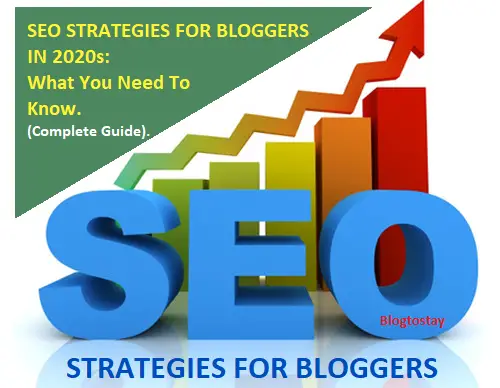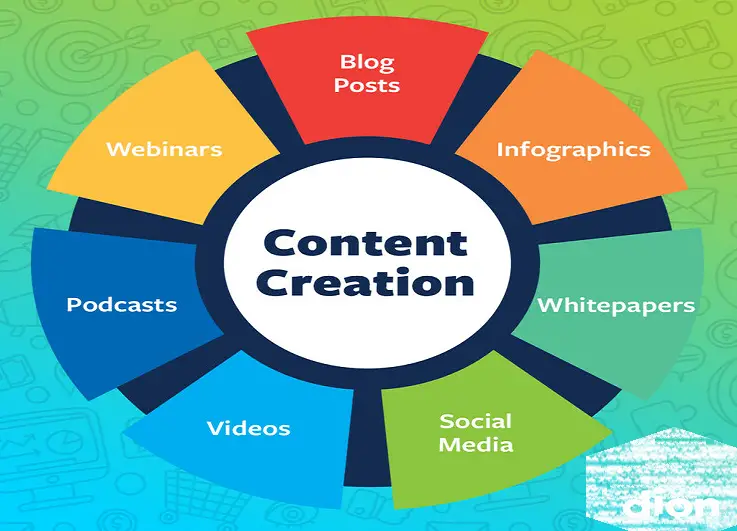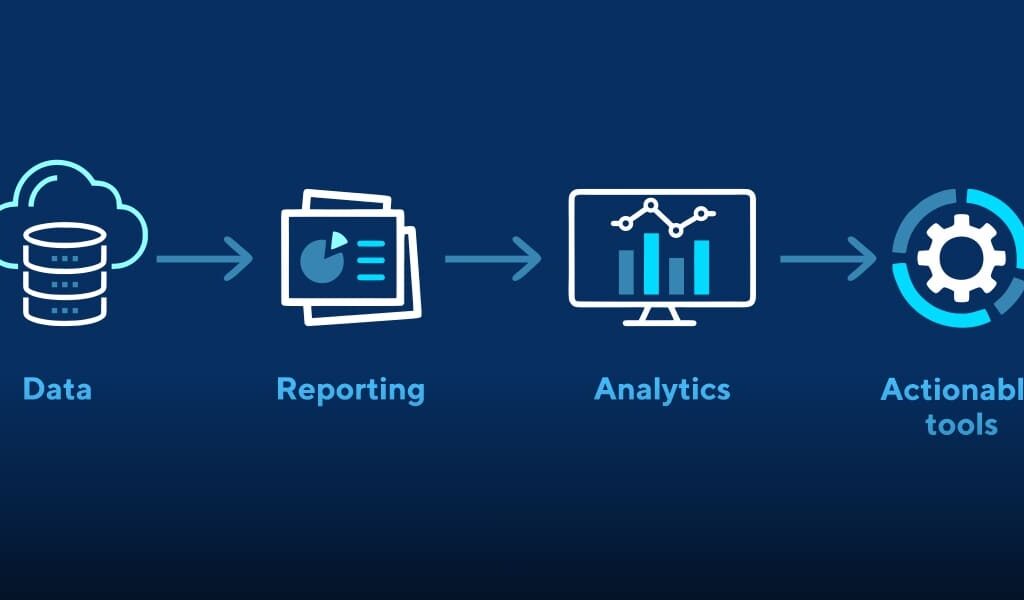1.Introduction to SEO for Bloggers:

We all must have to agree that SEO is a crucial aspect of blogging that helps improve the visibility and ranking of your blog posts in search engine results pages (SERPs).
As a blogger who always optimizes his/her content for search results, you will definitely attract more organic traffic, increase your blog visibility, and ultimately grow your audience.
Let’s look into the importance of SEO for bloggers.
-> Importance of SEO for Bloggers:-
For success to be attained by any blogger, SEO optimization should be observed because it plays an important role in the attainment of such success as you aspired.
Below are some key reasons why SEO is important for bloggers:
.. SEO will help your blog to rank well in search engine results pages (SERPs) for relevant keywords.
.. You will attract a targeted audience to your blog with proper keyword research and optimization.
.. Long-term results, in the sense that SEO efforts will continue to drive organic traffic and visibility over time.
.. Optimizing your website’s loading speed, ensuring mobile responsiveness, and organizing your content with clear navigation will all contribute to a positive user experience.
.. Your credibility and authority will be enhanced as your blog appears often on the top search results for relevant keywords.
.. With content optimization (SEO), you will be guaranteed a competitive edge in this world of crowded blogosphere.
Now, let’s have an overview of the various SEO strategies.
-> Overview of SEO strategies:
There are several strategies to follow which is aimed at improving your website’s visibility and rankings in search engine results pages (SERPs).
Below are lists of various techniques and practices involved in SEO practices:
i) Keyword Research.
ii) On-Page Optimization.
iii) Content Creation.
iv) Link Building.
v) Technical SEO.
vi) Monitoring and Analysis. And more.
We will go ahead and analyse the various SEO strategies in our subsequent sub-topics below. I hope you are with me, ok! let’s delve into:
2. Keyword Research:

Your priority as a blogger is to identify relevant keywords that are commonly searched for by your targeted audience.
Tools like Google Keyword Planner, SEMrush, and Ahrefs can be of great help in keyword research strategy.
Then, what is the importance of keyword research for bloggers?
-> Importance Of Keyword Research For Bloggers.
Keyword research is very important for bloggers in the following ways:
i) Keyword helps bloggers to optimize their content, which means, you can identify the specific words and phrases that your target audience uses when searching for information on the internet.
ii) Bloggers will experience higher search engine rankings, with relevant keywords in their content then, the chances of your blog posts ranking higher in search engine results pages (SERPs) will be guaranteed.
iii) When bloggers identify the keywords that people use when searching, they can easily understand the questions, problems, or topics their readers are interested in.
iv) You will easily understand your competitor’s analysis in the sense that, you will be able to access the competition, identify content gaps, and be able to find opportunities to create unique and valuable content that will differentiate your blog from your competitors.
v) Content ideas and inspiration will be guaranteed by exploring related keywords and long-tail variations which will enable you to uncover specific topics, subtopics, or angles that you may not have considered before as a blogger.
We now have to gain knowledge about the tools to use for keyword research purposes.
-> Tools For Keyword Research.
Below are ten popular tools for keyword research purposes as an aspiring blogger or already practising one:
i) Google Keyword Planner:- This is a great start for keyword research. It is a free tool that provides keyword ideas, search volume data and adds competitive levels.
ii) SEMrush:- Offers comprehensive keyword research features. Provides insights into organic and paid search, backlinks, and more.
iii) Ahrefs:- A powerful SEO tool which will provide you with detailed research data, search volume, and competitor analysis. With backlink analysis and site auditing features.
iv) Moz Keyword Explorer:- Offers keyword suggestions, search volume data, difficulty scores, and SERP analysis.
v) Ubersuggest:- Very user-friendly and offers keyword ideas, search volume, and keyword difficulty metrics. Will provide you with content ideas, backlink data, and competitor analysis.
vi) KeywordTool.io:- Popular tool that generates keyword suggestions from Google Autocomplete. You will be provided with long-tailed keyword ideas. Supports keyword research for multiple platforms like Google, YouTube, Bing, and Amazon.
vii) Long Tail Pro:- Focuses on finding long tail keywords.
viii) Serpstat:- This is an all-in-one SEO tool that includes keyword research functionality too.
ix) KWFinder:- Specializes in finding long tail keywords with low competition.
x) SpyFu:- Helps identify profitable keywords and uncover competitor strategies.
Then, how can bloggers identify relevant keywords?
-> Identifying Relevant Keywords For Your Blog.
As a blogger, below are steps you can follow to identify relevant keywords patterning your niche:
i) Understand your targeted audience by identifying their demography, preferences, and pain points.
ii) Brainstorm topics related to your areas of blogging and this will help you form the foundation for your keyword research.
iii) Take advantage of some keyword research tools just as I stipulated above.
iv) Analyze intent like; are people searching for information, looking for a solution to a problem, or seeking a specific product or service?
v) Long-tailed keywords are longer and have less competition. Look for long-tailed keywords in your niche.
vi) Use tools like SEMrush or Ahrefs to analyse your competitors’ blogs to see what keywords they are targeting and ranking. Copy them and remember to re-phrase your own topic while still sustaining the major keywords (I make use of this idea always).
vii) Consider Search Volume. High search volume should indicate more potential traffic, and also more competition. You will now have to balance it by targeting a mix of high-volume and low-competition keywords.
viii) Use keywords that align with your blog’s tone and style.
xi) Stay up-to-date with the current trend because keyword search activities change with time.
x) Refine and test your content and always monitor its performance.
3. On-Page SEO:

These are the optimization techniques and practices that are implemented directly on a website’s pages. And this is to improve the website’s search engine ranking and visibility.
This kind of optimization should focus basically on the various aspects of the webpage which include the content, HTML source code, meta tags, and site structure.
Then, how can we optimize blog post titles and meta descriptions?
-> How To Optimize Blog Post Titles And Meta Descriptions:-
Below are some tips to help you optimize your blog post titles and meta descriptions:
i) Try to understand your audience when creating titles and meta descriptions. This process will help you tailor your titles and meta descriptions to resonate with your audience.
ii) Make sure to identify relevant keyword phrases related to your blog topic, and incorporate these keywords into your title and meta-descriptions. Note this; avoid keyword stuffing for this could negatively impact your search engine ranking.
iii) Both your title and meta-description should be concise and straight to the point. Aim for a title length of 50-60 characters and a meta-description length of 150-160 characters.
iv) Make use of enticing words to tempt readers to want to click. Do not forget to use action words, create a sense of urgency, or offer a solution to a problem.
v) The blog title and meta-description of your blog should vividly reflect the content of your blog.
-> How To Engage In Proper Usage Of Heading Tags (HI, H2, etc.)
To improve the readability of your blog, you should involve in the usage of heading tags like (H1, H2, etc). Below are five guidelines for using heading tags effectively:
i) Heading tags are for structuring your blog content hierarchically. The H1 tag is for the main heading of the page and should be used only once.
The H2 is the main section headings and H3, H4, and the rest represents subheadings within those sections.
ii) Keep your heading tags concise and descriptive by using keywords and phrases that accurately summarise the content of the section. This will help both readers and search engines comprehend the main point covered within each section.
iii) Stick to a consistent hierarchy and formatting within your blog posts or website. For example, use H2 for main section headings, H3 for subheadings, and so on. Tips: Examine my table of content at the beginning of every article.
iv) Use CSS to style your heading tags and make them visually appealing and distinguishable from other heading tags. CSS will allow you to control the font size, colour, and spacing, without impacting the structure and semantics of your content.
v) Don’t rely solely on visual formatting: While you can style heading tags using CSS to make them visually appealing, don’t solely rely on visual formatting for your headings. Make sure to use the appropriate heading tags (e.g., H1, H2, etc.) to indicate the importance and hierarchy of your content. This is important for accessibility and SEO purposes.
-> How To Incorporate Keywords Naturally In Your Content:
Below are 5 tips to incorporate keywords naturally in your content:
i) Use keyword research tools like Google Keyword Planner, SEMrush, or Ahrefs with a good balance of search volume and competition.
ii) By understanding the user’s intent whether they are there to make a purchase, looking for information, or looking for a solution to a problem will help you craft content that fulfils their needs.
iii) Use keywords strategically in the content:
a. Title and headings: Include your primary keyword in the title of your content and preferably in one or more subheadings. This helps search engines and readers understand the topic.
b. Introduction: Incorporate your keyword naturally within the opening paragraph to establish relevance and context.
c. Body text: Sprinkle-related keywords throughout the content in a way that sounds natural and not forced. Avoid keyword stuffing, which means using the keyword excessively and unnaturally, as it can harm your SEO efforts and readability.
d. Meta tags: Optimize your meta title and meta description with relevant keywords to improve click-through rates in search engine results.
e. Image alt text: When using images, provide descriptive alt text that includes relevant keywords. This helps search engines understand the image content and can improve visibility in image search results.
iv) Incorporate synonyms and related terms throughout your content to make it more natural and diverse. This helps search engines understand the broader context of your content.
v) Relevant content that resonates with human are likely to rank well on the search engine. So, try to write for humans and not just search engines.
Focus on delivering valuable information, addressing user needs, and engaging your audience.
-> How to Do Image Optimization For Search Engines:
Below are five tips on image optimization for search engines:
i) Use JPEG format for photographs and complex images with many colours, and use PNG format for images with transparent backgrounds or simple graphics.
ii) Compress your image and make sure not to compress the quality of the image. Large image format will affect the loading speed of your website.
iii) Rename the image to suit the content of the page before uploading. Try to use keyword names to improve the search results. For example; instead of “IMG1233.png” use something like “Bestblogs.png.”
iv) Use descriptive alt text: Alt text (alternative text) is a text description that you provide for an image. It serves two purposes: it helps search engines understand the image content and provides accessibility for visually impaired users. Write descriptive alt text that accurately describes the image using relevant keywords. However, avoid keyword stuffing and keep it concise and naturally-sounding.
v) Set the width and height attributes for your images in the HTML code.
vi) Use structured data markup, such as schema.org, to provide additional information about your images to search engines.
vii) Whenever possible, host the images on your own domain rather than relying on third-party image hosting platforms.
viii) Create an image sitemap: Include your images in an XML sitemap specifically designed for images.
ix) Place images within the context of relevant and descriptive content.
-> URL Structure And Permalink Optimization.
Below are some tips on how to structure URL and permalink optimization:
i) Avoid using long and scattered URL formations. Try to keep your URL concise and direct to the content of your post.
ii) Incorporate the main keyword or key phrase that best represents the content of the page.
iii) Use hyphens (“-“) to separate words in your URLs. Hyphens are more readable and preferred by search engines compared to underscores or spaces. For example, use “example.com/product-category/product-name” instead of “example.com/product_category/product_name.”
iv) Use subdirectories to categorize and organize content. For example, use “example.com/blog” for blog posts and “example.com/products” for product pages. This helps search engines and users navigate your website more easily.
v) Avoid unnecessary parameters: Minimize the use of parameters, such as session IDs or tracking codes, in your URLs.
vi) Ensure that the target keyword or key phrase is included in the permalink of your page or blog post.
vii) Keep all letters in your URLs lowercase. Differentiating between uppercase and lowercase letters in URLs can lead to duplicate content issues because web servers treat them as separate URLs.
viii) Avoid stop words: Exclude unnecessary stop words (e.g., “and,” “the,” and “of”) from your URLs. This helps keep URLs concise and focused on the main content.
ix) If you have a multilingual or multi-regional website, consider implementing language or region-specific URLs.
x) If you make changes to your URL structure or permalinks, ensure that you set up 301 redirects from the old URLs to the new ones.
4. Content Creation And Optimization.

Creating quality content is a key strategy to engaging your audience in a positive way.
You could be able to increase your website ranking, attract more organic traffic and engage your targeted audience by creating high-quality content and optimizing it for search engines.
Below are some tips on helping you to optimize your content for search engine results:
-> Creating High-Quality, Relevant, And Engaging Content.
Your content should focus on solving the problems of your audience, answering their questions and providing relevant information.
To further optimize your content, use a variety of content formats, such as blog posts, articles, videos, infographics, and podcasts, to cater to different preferences.
-> Understanding User Intent And Targeting Keywords
For effective content creation, there is a need to understand the user’s intent and targeted keywords. Below is a breakdown of how to achieve this aspect:
i) User Intent:
This is the underlying motivation or purpose behind a user’s search query. When you understand the user intent, you could be able to create content that addresses their problems directly. Below are four primary types of user intent:
— Informational intent: In this aspect, users are seeking information, answers, or explanations. Example query: “How to get thin thigh in 30 days?”
— Navigational intent: These users will be looking for a specific website or resource. Example query: “Twitter log-in page.”
— Transactional Intent: In this aspect now, the users intend to complete a transaction, such as purchasing a product or booking a service. Example query: “Buy Android phone online.”
— Commercial Intent: This is where users are determined in researching products or services with the intention to make a purchase in the future. Example query: “Best Tesla Phone under $300.”
By taking recognition of users’ intent and optimizing your website and content to align with what they are searching for, you have gone a long way providing them with relevant information on what they are interested in.
ii) Trageting Keyword:
Keywords are the key results user type in to search for specific information on the browser within the internet.
Targeting specific keywords will enable you to rank well in search engine results pages (SERPs).
Below are some tips to effectively target keywords:
… You should conduct keyword research to know keywords that are relevant to business, products, or services.
… Make use of keywords that align with your website’s content and user intent.
… Engage in on-page optimization by Incorporating the selected keywords naturally into your website’s content, including titles, headings, meta tags, and body text.
Remember, search engines consider other factors such as content readability, link building, and multimedia engagements when ranking your content.
Let’s consider them too.
-> Formatting And Organizing Content For Readability.
This is very essential to enable your readers to understand and be able to assimilate your content. Below are tips to help you organize content for readability:
.. By Breaking your content into logical sections using headings (H1, H2, H3, etc.) and subheadings. Readers can scan the content and understand the structure.
.. Avoid using Long blocks of text for this can be daunting to readers. Aim for shorter paragraphs, ideally 3-4 sentences long.
.. Utilize Bulleted or Numbered Lists: This format helps readers quickly grasp information, enhances readability, and makes content more scannable.
.. Use bold, italics, or underlining to highlight important keywords, phrases, or key takeaways.
.. Don’t overcrowd your content. Leave enough white space between paragraphs, headings, and other elements to give readers visual breathing room.
.. Maintain a consistent formatting style throughout your content. Ensure that headings, subheadings, font sizes, and text formatting (bold, italics) are used consistently.
.. Use visual elements such as images, infographics, or charts which can enhance the readability of your content.
.. Consider Readability Tools: These tools provide insights into factors like sentence length, word choice, and overall readability score.
.. Proofread and Edit: Always proofread and edit your content before publishing. Use tools like Grammarly.
.. With the increasing use of mobile devices, there is a need to ensure that your content is responsive and readable on different screen sizes.
-> How To Incorporate Internal And External Links.
This is a valuable SEO practice that will help rank your pages very well on the search engine.
Below are how you can effectively incorporate external and internal links:
INTERNAL LINKS:
Internal links are hyperlinks that point from one page in your website to another page on the same website. This is very essential because it will allow users to navigate within your website and establish connections between relevant content.
Some best practices for incorporating internal links are:
… Always try to place internal links within the body of your content, where they are contextually relevant. Link to related articles, blog posts, or pages that provide additional information or support the current topic.
… Avoid using generic terms like “click here” or “read more.” Instead, use specific keywords or phrases that accurately represent the linked content.
… Categorize your content into relevant sections and use menus, sidebars, or related post sections to provide internal linking opportunities.
… Though it is crucial to use internal links, avoid excessive linking that may overwhelm or confuse users. Maintain a balance and prioritize quality over quantity.
EXTERNAL LINKS:
External links are those hyperlinks that point from your website to another website. They are there to provide additional resources, references, or citations to support your content and demonstrate credibility.
Below are what to consider when incorporating external links:
… Make it a priority to Link to reputable and authoritative sources that add value and support your content.
… To avoid users leaving your website when they hit an external link and to improve user experience, consider setting external links to open in a new browser tab.
… No-follow Links: In certain cases, you may want to use the “no-follow” attribute for external links. This attribute tells search engines not to pass authority or “link juice” to the linked website. It’s commonly used for sponsored or paid links, user-generated content, or to avoid endorsing questionable websites.
… When citing statistics, studies, or quotes, provide proper attribution and link to the original source. To enhance the credibility of your content.
… Incorporate external links naturally within your content, where they add value and expand on the topic.
-> Utilizing Multimedia (videos, images) For Better Engagement.
For better engagement with your audience consider utilizing multimedia formats like videos, and images to attract and retain visitors and convey information in a visually attractive manner. Below are some tips on how to incorporate multimedia for better engagements:
i). VIDEOS:
— Create engaging video content that will resonate with the nature of your content.
— Place videos within your blog posts, articles, or landing pages where they enhance the topic and provide additional context or visual explanations.
— Place videos within your blog posts, articles, or landing pages where they enhance the topic and provide additional context or visual explanations.
ii). IMAGES:
— Choose high-resolution images that are visually appealing, clear, and relevant to your content.
— Use images to illustrate complex concepts, processes, or data. Visual representations can make information easier to understand and more memorable for your audience.
— Create informative infographics that present data, statistics, or step-by-step processes in a visually appealing and easy-to-digest format.
— Add descriptive alt text to your images for accessibility purposes and to help search engines understand the content of the image.
This brings us to the fifth SEO STRATEGIES FOR BLOGGERS IN the 2020s. Mobile Optimization.
5. Mobile Optimization.

As the use of mobile phones becomes increasingly necessary, there is the utmost need to optimize your website or application to be mobile-user-friendly.
Mobile optimization is the process of adapting and optimizing a website, application, or content to provide a user-friendly experience on mobile devices, such as smartphones and tablets.
Then let’s get to the importance of mobile-friendly blogs.
->The Importance Of Mobile-Friendly Blogs.
… Mobile devices, such as smartphones and tablets, have become the primary means of accessing the internet for a significant portion of the population.
… A blog that is optimized for mobile devices adjusts its layout, fonts, images, and navigation to fit smaller screens, making it easier for users to read and interact with the content.
… Search engines, like Google, prioritize mobile-friendly websites and blogs in their search results. By having a mobile-friendly blog, you improve your chances of ranking higher in mobile search results, driving more organic traffic to your blog.
… If your blog is mobile-friendly, it becomes easier for users to share your content on social media platforms, increasing its reach and potential for engagement.
… A mobile-friendly blog reflects positively on your brand’s reputation and professionalism. It shows that you value your audience’s needs and strive to provide an excellent user experience across all devices.
… Many bloggers monetize their content through advertising, sponsored posts, or affiliate marketing. Mobile-friendly blogs are attractive to advertisers and brands since they can reach a wider audience and deliver a better user experience.
-> Optimizing For Voice Search.
Voice Search is a technology that allows users to search the internet by merely speaking to a digital assistant. These digital assistants include Amazon’s Alexa, Google Assistant, or Apple’s Siri, and this technique is used instead of typing out your search queries.
You can easily ask your device a question or give a command using natural language and go ahead to receive an immediate spoken response.
Due to its fastness, convenience, and accessibility than traditional text-based search methods, this technology is becoming increasingly popular today.
This Voice Search technology is powered by advanced natural language processing (NLP) algorithms that will enable digital assistants to understand the context behind a user’s query.
For in-depth knowledge on HOW TO OPTIMIZE FOR VOICE SEARCH. Follow the heading below.
How To Use AI-Powered Tools To Optimize Your Blog For Voice Search.
6. Technical SEO:

This is a process of optimizing a website’s technical aspects to improve its visibility and ranking in search engine results.
The difference between Technical SEO and Traditional SEO is that traditional SEO focuses on optimizing your content and off-page factors like backlinks, while technical SEO deals with the structure and functionality of the website.
Below are some key factors of Technical SEO:
-> Site Speed Optimization:
This is crucial for user experience and search engine rankings. This should involve the minimization of code bloat, optimizing images, leveraging browser caching, and using content delivery networks (CDNs).
-> XML Sitemaps And Robots.txt:
These are two important files that are used in technical SEO to communicate with search engines and be able to control how they crawl and index your website.
Let’s do an overview of both below:
a) XML Sitemaps:
These are files that will list all the URLs on your website that you will like search engines to crawl and index. These are the roadmaps which will enable search engine bots to discover and understand the structure of your website.
Below Are The Key Points About XML Sitemap:
i). Inclusion: XML sitemaps should include all the important pages of your website, including content pages, blog posts, product pages, and other relevant URLs.
ii). Crawling priorities: You can assign priorities to different URLs within the XML sitemap to indicate their importance relative to other pages on your site. This helps search engines prioritize crawling and indexing.
iii). Frequency and last modification: You can specify how frequently the content on a particular URL changes and when it was last modified. This information can guide search engines on how often to revisit and update their index.
iv). Indexing instructions: XML sitemaps can also include instructions for search engines, such as indicating which URLs to index or not to index, or which ones should be crawled more or less frequently.
v). Submitting to search engines: Once you have created your XML sitemap, you should submit it to search engines like Google, Bing, and others through their respective webmaster tools or search console interfaces. This helps search engines discover and process the sitemap more efficiently.
b) Robots.txt:
A text file embedded in the root directory of your website will provide instructions to search engine bots on how they should crawl and index your website’s pages.
This will enable you to control access to different parts of your website and prevent the crawling of specific content if necessary.
Below are key points about Robots.txt:
i) Crawling permissions: You can use robots.txt to allow or disallow access to certain directories, files, or entire sections of your website. This can be helpful for protecting sensitive information, preventing duplicate content issues, or restricting access to low-value pages.
ii) search engine bots or user agents within the robots.txt file. This allows you to customize the crawling behaviour for specific search engines.
iii) Sitemap reference: You can include a reference to your XML sitemap in the robots.txt file to help search engines discover and crawl your sitemap more easily.
iv) Syntax and guidelines: Robots.txt follows a specific syntax and uses specific directives like “Disallow” and “Allow” to control crawling. It’s important to ensure the correct syntax and avoid any errors that could inadvertently block search engines from crawling important parts of your website.
In summary, bot XML Sitemap and robots.txt are valuable tools for mapping how search engines interact with your website.
Their help is to make sure that search engines crawl and index the right content. And should be able to avoid unnecessary crawling and indexing of irrelevant or sensitive pages.
-> Canonicalization And URL Structure:
a) CANONICALIZATION:
When there are multiple versions of the same content accessible through different URLs, then the ability to select a preferred version of a webpage is called canonicalization.
This will help consolidate the ranking signals and avoid duplicate content issues.
When multiple URLs have similar or identical content, search engines may view them as separate pages, potentially leading to diluted ranking signals and divided user engagement. Canonicalization addresses this problem by specifying the preferred URL that search engines should consider as the primary version.
The preferred URL is specified using a canonical tag, an HTML element included in the head section of a webpage. The canonical tag relays the preferred URL to search engines and informs them that this version should be indexed and displayed in search results, consolidating the ranking signals across multiple URLs.
Below are the situations in which you should implement conical tags:
— Duplicate content caused by printer-friendly versions, session IDs, or URL parameters.
— Multiple versions of a webpage (e.g., HTTP vs. HTTPS, www vs. non-www).
— Similar content is available on different pages of a website.
b) URL STRUCTURE:
A well-structured URL can provide valuable information to search engines and users about the content of a webpage.
Below are best practices for URL Structure:
i) Descriptive: URLs should provide a clear idea of what the page is about. Use relevant keywords that accurately represent the content. Avoid generic or cryptic URLs that provide a little context.
ii) Concise: Keep URLs as short and concise as possible while still conveying the content. Long and complex URLs can be difficult for users to read and remember, and search engines may truncate them in search results.
iii) Readable: Use hyphens (-) to separate words within the URL. Avoid using underscores (_) or special characters that can make the URL harder to read and understand.
iv) Hierarchical: Structure your URLs in a logical and hierarchical manner, reflecting the organization of your website. This can help both users and search engines navigate and understand the site’s structure.
v) Static: Where possible, use static URLs that don’t change frequently. Static URLs tend to be more search engine-friendly and are easier to remember and share.
vi) Avoid keyword stuffing: While it’s important to include relevant keywords in URLs, avoid over-optimization or keyword stuffing. Maintain a balance between meaningful and natural URLs and keyword inclusion.
-> Schema Markup And Rich Snippets
Schema markup and rich snippets are related concepts in technical SEO that provide additional context and enhance the appearance of search engine results. Here’s an overview of each:
a) Schema Markup:
Schema markup is a structured data vocabulary that you can add to your website’s HTML code to provide search engines with more detailed information about your content. It helps search engines better understand the meaning and context of your web pages, which can lead to more informative and relevant search results.
b) Rich Snippets:
Rich snippets are search results that include additional information displayed alongside the traditional title, URL, and meta description. This extra information is derived from schema markup and provides users with a more visually appealing and informative search experience.
Rich snippets can take various forms, depending on the type of content and the schema markup implemented. Some common types of rich snippets include:
Reviews and ratings: Displaying star ratings and user reviews for products, services, or businesses.
Recipes: Showing cooking time, calorie count, and reviews for recipes.
Events: Providing event details such as date, time, and venue.
Products: Including price, availability, and product features.
Videos: Displaying video thumbnails, duration, and other relevant details.
FAQs: Showing frequently asked questions and their answers.
7. Backlink Building:

This is also known as link building and is very essential for search engine ranking.
When reputable websites link to your content, search engines consider it a vote of confidence and may reward your website with higher rankings in search results.
-> The Importance Of Backlinks For SEO.
.. Enhance search engine visibility because, when authoritative and relevant websites link to your pages, search engines perceive your site as trustworthy and valuable, resulting in improved visibility in SERPs.
.. Backlinks can drive referral traffic to your website.
.. Websites with a higher number of quality backlinks tend to rank higher in search results.
.. Backlinks from reputable and authoritative websites are seen as endorsements of your content. So authority and trust will be established.
.. Backlinks also play a role in the indexing and crawling process of search engines.
-> Strategies For Acquiring High-quality Backlinks.
.. By creating high-quality content because other websites are eager to link back to you naturally when there is quality amidst your content.
.. Guest blogging is another strategy. And this involves writing articles for other blogs in the same niche as yours.
By including a link back to your website in your author bio or within the content, you can gain exposure, generate traffic, and obtain backlinks.
.. By Identifying authoritative websites or blogs that have resource pages or lists of helpful links related to your industry. Reach out to the webmasters and suggest adding your website as a valuable resource.
.. Find broken links on other websites and offer your own content as a replacement.
.. By promoting your articles on social media platforms and If your content is valuable and share-worthy, people may link to it from their own websites or blogs.
-> Guest Blogging And Outreach.
Guest blogging and Outreach are two important processes for acquiring backlinks and improving SEO. Let’s get to treat each and every one of the two below:
i) GUEST BLOGGING:
Guest blogging involves writing and publishing articles or blog posts on other websites as guest authors. The primary goal is to provide valuable content to the target audience of the host website while gaining exposure and earning backlinks to your own site.
The benefits are numerous and one of the basic benefits is an increase in awareness of your own blog while linking from the major blog to yours.
ii) OUTREACH:
Outreach involves reaching out to website owners, bloggers, influencers, or journalists to establish relationships and request backlinks to your site.
-> Social Media Promotion And Networking.
Social media promotion and networking are essential elements of digital marketing that can have a positive impact on SEO. Below is how social media promotion and networking can benefit your SEO efforts:
.. By promoting your website and sharing valuable content on social media, you can increase its visibility and attract more visitors.
.. When your content is shared and liked by others, it increases the likelihood of it being linked to other websites or blogs, resulting in valuable backlinks.
.. When you share your website content on social media and it gains traction (likes, shares, comments), it increases the chances of search engine bots discovering and indexing your web pages.
.. Social media platforms provide an opportunity to connect and network with industry influencers, thought leaders, and potential customers.
In other to make the most of social media promotion and networking, below are the steps to follow:
. Identify the platforms where your target audience is most active and focus your efforts there.
. Create and share high-quality and shareable content on social media.
. Engage with your audience by responding to comments, asking questions, and encouraging discussions.
. Connect and build relationships with influencers and thought leaders in your industry.
. Monitor social media metrics and analytics to understand what types of content resonate with your audience and adjust your strategy accordingly.
And do not forget that social media promotion and networking should be seen as a part of a comprehensive SEO strategy that includes other elements such as content creation, on-page optimization, and link building.
8. User Experience and Engagement(UX):

Search engines aim to provide the best possible results for users, and websites that deliver a positive user experience tend to rank higher.
Below are some importance of user experiences for SEO:
-> Importance Of User Experience For SEO.
. By focusing on UX, you can create a website that encourages users to stay longer, explore different pages, and engage with your content, thus reducing the bounce rate.
. Dwell time refers to the amount of time users spend on your website before returning to search results.
With an increased Dwell time on your site, search engines may interpret this as a signal of relevance and quality, potentially boosting your SEO rankings.
. Page load speed is a critical UX factor. Slow-loading pages frustrate users and can lead to higher bounce rates.
Optimizing your website’s performance, reducing page load times, and improving server response times can positively impact both user experience and SEO.
9. Monitoring and Analytics:

Monitoring and Analytics involve the systematic collection, analysis, and interpretation of data to gain insights into various aspects of an organization’s performance, processes, and systems.
Below are some key points to consider regarding monitoring and analytics:
Monitoring:
.. Real-time tracking: Monitoring involves the continuous observation of systems, processes, or activities to ensure they are functioning as intended.
.. Key performance indicators (KPIs): Organizations define specific KPIs that align with their goals and objectives to measure performance and progress.
.. Alerting and notifications: Monitoring systems often include alert mechanisms to notify stakeholders when predefined thresholds or conditions are met or breached.
.. Infrastructure monitoring: IT infrastructure, including networks, servers, and applications, can be monitored to ensure their availability, performance, and security.
Analytics:
.. Data analysis: Analytics involves examining data to discover patterns, correlations, and trends. It utilizes various statistical and analytical techniques to extract meaningful insights.
.. Descriptive, predictive, and prescriptive analytics: Descriptive analytics focuses on understanding past and present data, predictive analytics aims to forecast future outcomes, and prescriptive analytics suggests actions to optimize outcomes.
.. Business intelligence (BI): BI tools and platforms enable organizations to analyze and visualize data, often through dashboards and reports, to facilitate data-driven decision-making.
.. Data-driven decision-making: Analytics empowers organizations to make informed decisions based on data insights rather than relying solely on intuition or past experiences.
Benefits of Monitoring and Analytics:
.. Proactive issue detection and resolution: Monitoring helps identify anomalies or deviations from normal operations, allowing organizations to address issues promptly.
.. Performance optimization: Analytics can uncover bottlenecks, inefficiencies, or areas for improvement, enabling organizations to optimize their processes and systems.
.. Cost savings: By monitoring resource utilization and analyzing data, organizations can identify cost-saving opportunities, such as optimizing energy consumption or reducing waste.
.. Enhanced security: Monitoring and analytics can detect potential security breaches or abnormal activities, allowing organizations to respond quickly and mitigate risks.
.. Data-driven insights: Analytics provides organizations with valuable insights into customer behaviour, market trends, and other factors that can inform strategic decisions and improve competitiveness.
10. CONCLUSION:
Staying Updated With SEO Trends:
Staying updated with SEO (Search Engine Optimization) trends is crucial to ensure that your website remains optimized for search engines and maintains its visibility in search results. Here are some effective strategies to stay informed about SEO trends:
— Follow reputable SEO blogs and websites: There are several authoritative websites and blogs dedicated to SEO that provide regular updates, industry insights, and best practices. Some popular SEO resources include Moz, Search Engine Journal, Search Engine Land, and Neil Patel’s blog. Subscribe to their newsletters or follow them on social media to receive timely updates.
— Engage in SEO communities and forums: Participating in SEO communities and forums allows you to connect with fellow professionals, share knowledge, and stay updated with the latest trends. Websites like Reddit (r/SEO), SEO Chat, and Warrior Forum have active communities discussing SEO topics.
— Attend SEO conferences and events: Look for conferences like MozCon, SMX, BrightonSEO, and Pubcon. If attending in-person events is not possible, many conferences offer virtual options or provide access to recorded sessions.
— Follow SEO influencers and experts: Identify influential figures in the SEO field and follow them on social media platforms like Twitter, LinkedIn, or YouTube.
— Monitor official search engine announcements: Stay updated with the official announcements and blogs of search engines like Google, Bing, and Yahoo. These platforms often share important updates related to search algorithms, ranking factors, and best practices.
— Utilize SEO tools and software: Many of these tools also offer features to track and analyze SEO trends. Examples of popular SEO tools include SEMrush, Ahrefs, Google Search Console, and Google Trends.
— Continuous learning and professional development: SEO is an ever-evolving field, so investing in continuous learning is essential. Consider enrolling in SEO courses, webinars, or workshops to expand your knowledge and skills. Online learning platforms like Udemy, Coursera, and LinkedIn Learning offer a wide range of SEO-related courses.
In conclusion, you must have to stay proactive knowing the fact that SEO trends change rapidly. By following these strategies and consistently investing time in learning, you’ll be better equipped to optimize your website for search engines and drive organic traffic.
I hope this tutorial helped you, if it did do not forget to subscribe, share and drop your comment.
Thanks and remain blessed.







When I initially left a comment I appear to have clicked on the -Notify me
when new comments are added- checkbox and now whenever
a comment is added I recieve four emails with the same comment.
There has to be a means you are able to remove me from that service?
Thank you! I saw similar here: najlepszy sklep and also here: e-commerce
I will see to that.